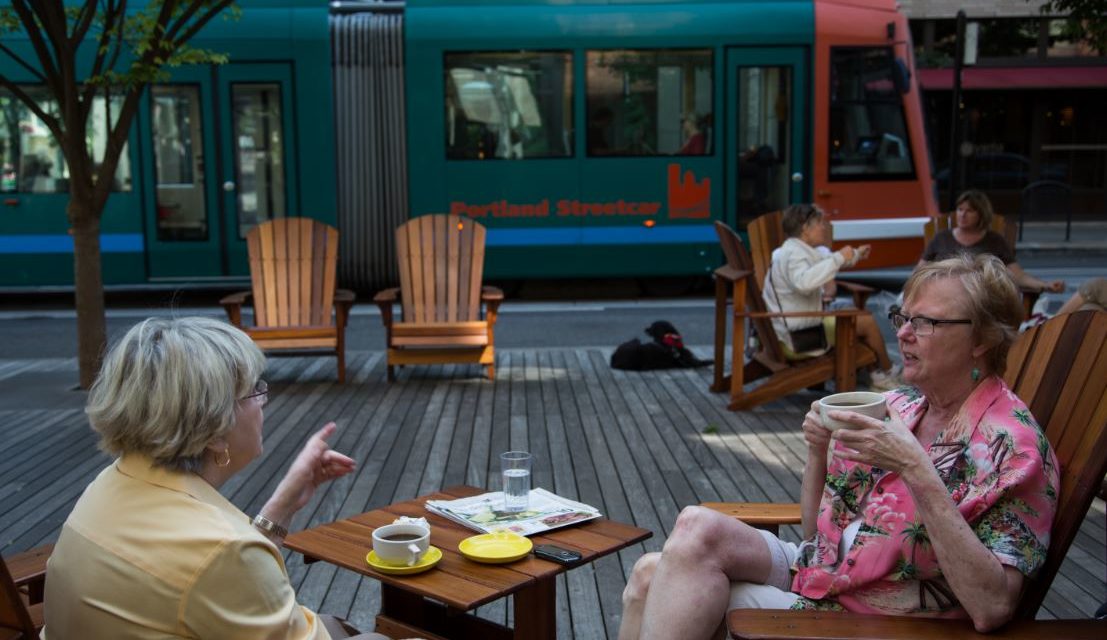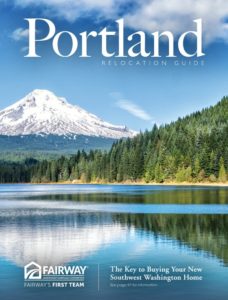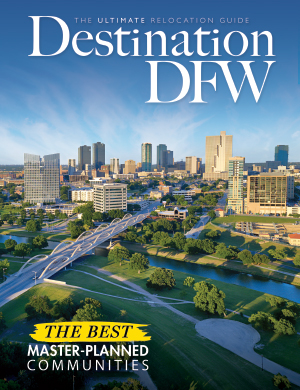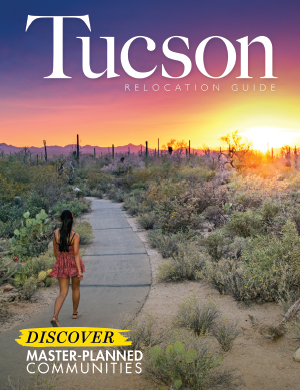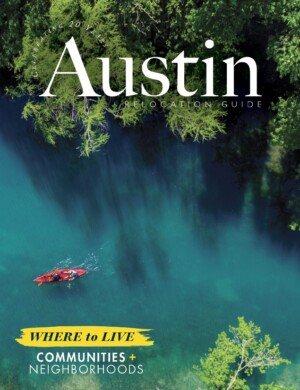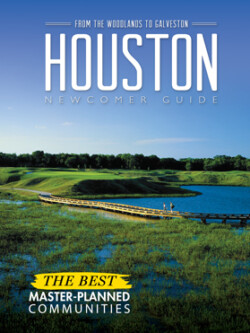Long gone are the days of mandatory retirement at age 65. Portland offers adult housing for every lifestyle and need to make your retirement years golden.
Retirees in the Portland find that they have a wide variety of housing options. Options that accommodate their budget while providing a lifestyle that encourages the pursuit of happiness.
Why retire in Portland
The Wall Street Journal profiled Portland as one of the best places to retire in March 2015. Why? The restaurant scene and walkability combined with the overall “culture of kindness” of Portland. Retirees are contributing to a projected 106% growth with people 65 and older living in Portland between 2010 and 2030 according to the 2013 Action Plan for an Age-Friendly Portland.
While aging is inevitable, medical advances and healthy lifestyle choices are responsible for increasing the number of years a person may live. As a result, the demographics of seniors in Portland have undergone significant changes. The term “senior” may describe an active person between their late 50’s or early 80’s. Baby Boomers now entering the senior arena are faced with the responsibility of preparing not only for their own retirement but also with making retirement and housing plans for their elderly parents as well.
Portland offers a wide array of adult housing options to accommodate the different requirements and lifestyles of seniors. From upscale retirement communities to full-care facilities specializing in caring for the elderly with mental and physical disabilities there is a senior citizen living solution to fit every need.
Taking Stock of Yourself
When making retirement housing plans there’s no denying that the number and diversity of choices available might make the process feel overwhelming. Begin by taking a personal inventory that takes into account personal living expenses health interests and expectations.
Budget Inventory
Make a list of monthly expenses from rental or housing fees to day-to-day living expenses such as dry cleaning and energy bills to current or anticipated medical expenses. The point is to be realistic about everyday expenses now so there are no rude surprises later.
Lifestyle Inventory
Active golf enthusiasts for example might want close proximity to a local golf course. Those who want to use this time for community involvement might want to live close to schools, churches or community centers. Others who want to continue developing and pursuing an active lifestyle might want easy access to hike and bike trails or fitness centers. Again being realistic on the front end helps determine smart choices that can only benefit later.
Should You Stay or Should You Go?
Staying Put
Packing up and selling a loved home with so many memories is a difficult decision. One viable option open to senior homeowners is the reverse mortgage. Which allows homeowners to turn the value of their home into cash. Guaranteed by the U.S. Department of Housing and Urban Development HUD offers seniors a federally insured private loan as a means to provide financial security and supplement social security meet unexpected medical expenses make home improvements and more.
The money from a reverse loan may be paid to the borrower in a variety of ways. From a lump sum, to a regular monthly cash advance, as a credit line account or in any combination. Typically borrowers do not have to pay anything back until they move, sell or pass away. Eligibility for most reverse mortgages requires that the home should be owned outright by the applicant and that the applicant is 62 years of age or older. Visit AARP’s website and use their Reverse Mortgage Calculator at www.rmaarp.com.
A reverse mortgage offers retirees a distinct advantage. Since most lenders require that borrowers have some sort of income. But a reverse mortgage does not require monthly payments and therefore no minimum amount of income is required for the loan application. Most reverse mortgages require no repayment as long as the owner or any co-owner lives in the home.
The best way to determine if a reverse mortgage is the best fit for one’s retirement plan is to honestly assess the following:
- How much would the home sell for on today’s market?
- What would the cost be to buy and maintain or rent a new home?
- Would there be any money left over from the purchase of a new home that could be safely invested?
- What are the options for downsizing into a less expensive home renting an apartment or moving into an assisted living or alternative senior housing situation?
Jumping into borrowing money for a reverse mortgage is not advised until looking into all of these senior living options. By being honest about current needs and housing trends and exploring all the options seniors can rest easy that they have selected the best housing choice that custom fits their particular budget and lifestyle needs.
Pack It Up
Being realistic about your life finances and longevity is a must if you decide to move to another community says Calvin Chamness real estate agent/developer and builder with JW Development Inc. “You have to think about your health and your future” advises Chamness “and expand your thinking beyond the average life expectation. Make sure that you’re close to hospitals and doctors that can provide you with the best care. Do they accept your insurance? All of this needs to be considered when moving from your current circle of friends and community to a new area. This is where a real estate agent can really help a person or family trying to find a retirement situation for someone as they have access to the most current facts and figures to help you make an informed decision.”
“Many who are making these decisions for themselves need to learn to be a little bit selfish” says Chamness. “I mean be selfish in a good way” he laughs. “Move to a community or area that you enjoy. Many of my senior-aged clients are downsizing their lifestyles and selling a home they’ve owned for 30 years. They’re trading down in price range want to be in a good area and need to select a home that’s a good investment for them. If your health is good and you’re reasonably active you also want an area with residents of a similar age and situation – just like you they’ve raised their kids have a lot of interests and a lot to talk about and can help each other.”
Senior Housing Options
The Department of Housing and Urban Development estimates that private senior care housing can range in cost from $20000 to $200000 per year depending on the services and degree of care offered by a facility. Many senior care housing communities employ medically trained staff and provide housekeeping and meal preparation services as well as transportation for shopping medical visits and social outings. HUD also notes that as Baby Boomers approach their own retirement years the trend toward creating active retirement communities where residents are involved and physically active will continue and seniors are encouraged to live as independently as they are capable of handling.
“The time to begin thinking about a retirement community isn’t when you have to have it” advises Terry Martinez with Parmer Woods Retirement & Assisted Living. “The time to think about it is when you don’t need it. There are not enough retirement communities to keep up with the demand and you want to be sure that you know your options and what’s available beforehand.”
Martinez says that more than 60 percent of her facility’s residents have moved when their adult children also decided to relocate. Martinez credits the Internet as a source for families to learn more about retirement communities check on specific programs and associated costs.
“When you’re trying to stay within a particular price range you want to match your living requirements with services offered” she says. “If someone’s parents are very independent and don’t need assistance – they just want a meal plan for example – then the associated costs are much less than for someone’s parents who require more care.”
“Remember” says Martinez “Medicare generally does not pay for long-term care only for services deemed medically necessary that are provided by a skilled facility or home health care that meets certain conditions. Medicaid will pay for certain health services and nursing home care for older people with low incomes and limited assets. Optimally the selected community should have someone on staff familiar with the requirements and criteria of both programs.”
Active Senior Housing Communities
Many seniors find that they simply do not want to worry about the upkeep and maintenance of a home preferring to spend their leisure time in other ways. Independent seniors in good health may find that they need nothing more than a community where they can fully enjoy pursuing their personal interests. For them moving to an active independent living retirement community might be the best fit for their budget and lifestyle where options include renting an apartment or the outright purchase of a property in a senior community.
Many active senior communities have information packets that may be requested in advance and offer tours of the community itself. A personal visit will give valuable first-hand information and an opportunity to visit with current residents who can offer their own experiences and provide an insider’s view on the community. Be sure to determine that personal interests and pursuits are offered such as health and fitness programs organized activities or sports. Other day-to-day living arrangements should also be considered such as shopping centers and grocery stores within easy walking distance. Are transportation services provided if needed? Where is the community located in proximity to major health care providers? And what security measures are in place for residents? For ultimate peace of mind some seniors rent a home under a short-term agreement at first to make sure the community provides for their needs and lives up to their expectations.
Continuing Care Retirement Communities
A Continuing Care Retirement Community (CCRC) offers 360-degree care in residential community for seniors with a full menu of services and living situations. Residents at a CCRC may move between independent living assisted living and nursing home care depending on their individual changing needs. Seniors electing to live in a CCRC (also known as “Life-Care Facilities” and “Life-Care Communities”) contract with the community in advance for a lifetime commitment to provide care regardless of their future health and needs. They then live in the residential community for the remainder of their lives and are placed within a living situation appropriate to their needs and abilities.
Seniors or family members of seniors who are concerned about future security find CCRCs a safe bet addressing any worries about future health problems down the road and alleviating any concerns about hidden costs along the way. A CCRC generally offers seniors a contract or contracts that provide a continuum of care that includes access to housing services and health care for more than one year or the balance of their lives. Usually it is a wise idea for seniors to move into a CCRC sooner rather than later as most CCRCs require that new residents be capable of living independently when they first move in.
Pick an option that works for you
There are a number of contract options offered by CCRCs to seniors and their families. An extensive care contract is the most expensive but affords the least risk providing unlimited long-term nursing care at little or no additional cost for as long as nursing home services are needed by the client. A modified care contract comes with medium financial risk and provides long-term health or nursing services for a specified period of time after which the senior or their guardian is responsible for the additional cost. A fee-for-service contract offers an a la carte approach requiring that residents pay separately for all health and medical services provided by the facility as well as long-term care. While a fee-for-service contract is the least expensive contract it does have the highest risk as costs can run very high for seniors who require unanticipated extensive care later in life.
The most common element in a CCRC contract is an entrance fee where regardless of whether the contract is an extensive modified or fee-for-service contract the resident pays a lump sum entrance fee plus monthly fees thereafter. Another CCRC contract option may require an equity agreement where seniors purchase a condominium or co-op apartment on the property instead of paying an entrance fee. Less commonly found are CCRC contracts where residents pay monthly fees only. Seniors and their families are advised to be sure to read the fine print on the contract carefully to ensure that they are signing an agreement that guarantees the lifetime of services and support over an extended period of time that they are looking for. There are so-called copycat senior-care residences that claim to offer all the benefits of a CCRC but in reality the services guaranteed by the actual contract fall far short of the claims made by management.
Do your research
Before signing a contract with a CCRC seniors should conduct a thorough review of the facility’s services operations and finances and determine that the CCRC is appropriate to their needs lifestyle and expectations. It’s also a good idea to ask a family attorney or accountant to review the contract as well. If the contract is found agreeable ask to spend at least one night and two days at the facility to test drive the community and make sure it is a good fit. Some points to consider include:
- Are pets allowed in your residence?
- What social recreational and cultural activities are offered?
- Is food prepared onsite? If so how is it?
- Are there fitness facilities onsite?
- Is the staff friendly and knowledgeable?
- What healthcare and personal care services are available?
- What preparations have been made for handling medical and evacuation emergency situations?
CCRCs are an excellent option for those who are independent and in good health but might need some assistance with daily living needs or require skilled nursing care. The variety of housing offered by CCRCs is varied as well ranging from ultra-urban high-rise apartment communities to cottages townhouses duplexes or even single-family homes located in a beautiful natural setting.
Assisted Living Communities
An Assisted Living Community (ALC) bridges the gap for seniors who need assistance with daily activities as a nursing home might offer but wish to live as independently as they are capable of living for as long as possible. Residents in an ALC are unable to live by themselves but do not require constant supervision. An ALC offers its residents assistance with eating bathing dressing laundry housekeeping and keeping track of medications. They often have centers for medical services but typically do not offer the extensive medical services provided by a nursing home. An ALC is not a substitute for a nursing home but rather is a stepping stone between complete independence and service provided by a nursing home.
Often an ALC will create an individualized service plan for seniors upon admission detailing personal services that will be provided to the resident. This plan is periodically reviewed and updated to provide the correct care each resident receives. Housing in an ALC may be studio or one-bedroom apartments with small kitchen facilities. Typically ALC housing units have group dining facilities and common areas where residents gather to enjoy social and recreational activities.
Licensed Facilities
An ALC may be licensed as a “Type A” or “Type B” facility says Martinez. “A facility with a Type A licensing means that the residents are mentally and physically able to vacate the building without assistance within 15 minutes” says Martinez. “A Type B certification means that residents require assistance to vacate the building within 15 minutes. Our facility is licensed for Type B as we are also certified to care for residents with Alzheimer’s.”
“Your first impression of an Assisted Living Community is the most important” says Martinez. “What do you see when you get out of the car? How do they take care of the lawn? What is your first impression of the staff? Are the residents properly dressed? How’s the lighting inside the buildings? What activities are available? Are staff members all in the same uniform? Scrubs are not appropriate for an Assisted Living Community but nametags are important.
Nursing Care Facilities
A Nursing Care Facility (NCF) is a state licensed private-care facility that provides 24-hour skilled hospital care for residents who do not require hospitalization but cannot be cared for at home. Also called Long Term Care Facilities the majority of nursing homes are staffed by caring trained persons who provide an excellent level of service for their residents.
It pays to shop around when selecting a NCF. Seniors should consult with a trusted doctor or health care practitioner for recommendations of nearby facilities. Plan on visiting at least four or five area facilities and make an appointment with the administrator or director of nursing. Check to make sure that information provided is consistent with information gathered during the facility tour. Discrepancies between provided information and your own observations indicate possible problems later on. A nursing care facility should have clean floors and a clean smell. Facilities with dirty floors and a sour smell do not put a high priority on cleanliness and should not be considered.
In Oregon ask to see the Health Care Regulation and Quality Improvement (HCRQI) report. The HCRQI program of the Department of Human Services is the agency responsible for the licensure of health care facilities in the State of Oregon. The Health Care Regulation and Quality Improvement program ensures that Oregonians have wide access to the health care they need and that it will be safe and of high quality.
Questions to Ask
The Oregon Department of Human Services is a valuable resource for ensuring that your facility meets certain standards and is inspected routinely. Not all senior housing is licensed to provide care and only licensed facilities are regulated by the state. Oregon DHS offers this advice and list of questions:
- Talk with the administrator residents and staff while you’re in the facility.
- Try to visit each facility more than once.
- Arrange to visit during mealtime or ask to have lunch with residents.
- Ask residents how they like living in the facility.
- Chat with staff about their job responsibilities.
- Talk with the administrator about his/her experience working in an assisted living or residential care environment.
- How long has the administrator been at this facility?
- Does the administrator appear to be knowledgeable and sincere?
- Is the facility clean odor free well lit and free from clutter?
- Are the common areas attractive comfortable and inviting?
- Does the size and design appeal to you?
- Do residents socialize with each other and appear happy and comfortable?
The answers to these questions combined with observations and impressions made during facility tours and staff interviews will ease the task of selecting the right nursing care facility.
Alzheimer’s and Dementia Care Facilities
Residents diagnosed with Alzheimer’s disease or another form of dementia need specialized care. Assisted Living Facilities offer services and separate facilities for residents with early onset symptoms but because of the progressive nature of the disease it may become necessary to transfer the resident to another facility that can provide more appropriate care.
Facilities specializing in the treatment of Alzheimer’s and dementia should provide a treatment plan that takes into account not only the resident’s medical needs but also the needs of the entire family with social services and professional consultations and individualized treatment reviews. Emphasis within the facility should be placed on providing a calming soothing environment that is sensitive to the needs of the patient.
Check out your local Area Agency on Aging (AAA) for more information. AAAs Advocate for older adults living in their area develop community-based long-term care services to meet the needs of those adults and administer funds to implement services. Most services coordinated by AAAs are provided through community service providers at the local level. Look up member agencies at www.o4ad.org.

